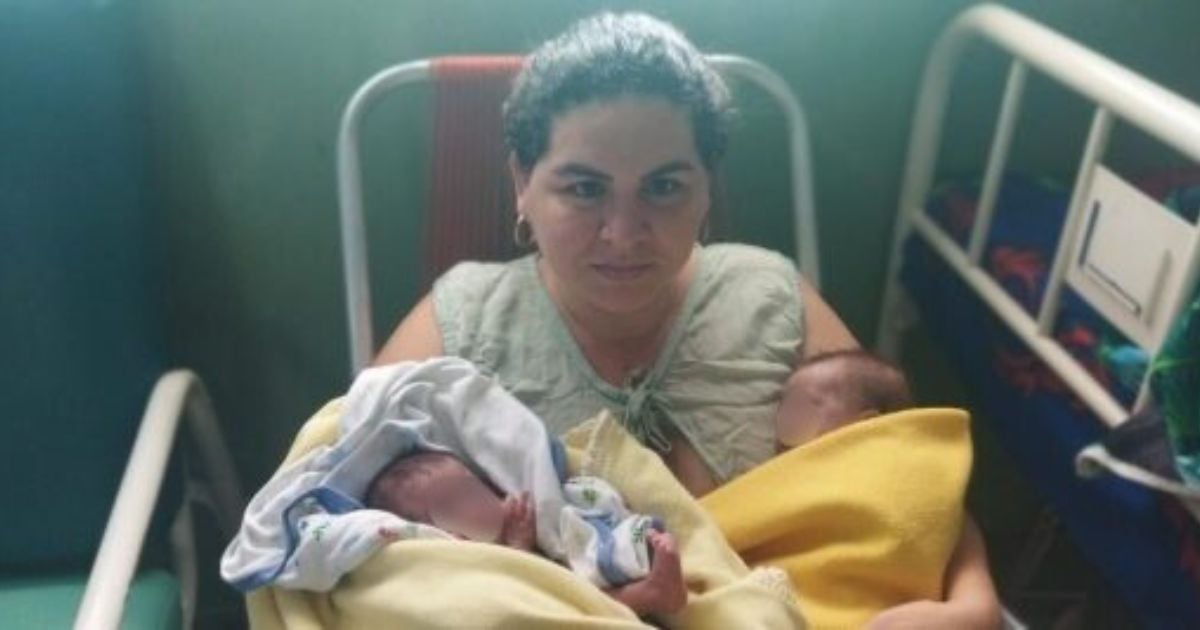In a remarkable turn of events at the Neonatology Unit of the Camilo Cienfuegos Hospital in Sancti Spíritus, the embrace of a mother played a crucial role in saving the lives of her premature twin daughters, Natali and Nicol. Born at just 28 weeks and weighing under two pounds each, the twins faced a challenging start.
Keily González Padrón, their mother, utilized the kangaroo care method—skin-to-skin contact between mother and baby—which proved to be a lifesaving approach for these fragile infants. The twins arrived into the world amidst uncertain prognoses and the hum of life-support machines, requiring weeks of intensive medical attention.
The Power of Maternal Bonding
Both girls were born in critical conditions, with immediate resuscitation necessary. They were placed on high-frequency ventilators; Nicol, the second twin, had severe lung complications. Over nearly three months, a dedicated medical team—comprising four nurses and two neonatologists per shift—worked tirelessly to ensure every procedure was executed flawlessly, from intubation to nutrition.
"It was not just one hero, but an entire team watching over them," remarked one of the attending nurses. Yet, beyond the medical interventions, the consistent nurturing provided by Keily was a pivotal element that tipped the scales towards recovery.
Keily practiced kangaroo care daily, holding her daughters close, which helped stabilize their heart rates, temperature, and breathing, and bolstered their immune systems. "I feel them calm when I place them on my chest," she shared, with visible emotion.
Family's Role in Recovery
The daily routine of skin-to-skin contact, amidst hospital alarms and medical equipment, not only accelerated the twins' weight gain but also deepened the mother-daughter bond. Each drop of breast milk, every tender touch, served as both emotional and physical therapy. The father also played an active role, sharing these bonding sessions to enhance stimulation and support.
"Seeing them feed strongly, hearing their defiant cries, and observing their rosy cheeks against their mother's chest is the best reward for countless sleepless nights," stated Dr. Yainara de Armas, one of the specialists overseeing their care.
Keily celebrated her 35th birthday just a day after their birth, amidst worry and silent hospital halls. Now, with her daughters stable and thriving, she reflects on that time as the best birthday gift imaginable: "Every tear of fear turned into a smile of triumph," she recalls.
A Story of Survival and Sacrifice
The survival story of Natali and Nicol highlights not only the medical team's dedication but also exemplifies the pure sacrifice of a mother—her body as a shield, tenderness as treatment, and love as a driving force. In a country where mothers face daily shortages, anxiety, and overwhelming burdens, this narrative underscores the power of maternal commitment, even when hope seems lost.
For Keily, this Mother's Day was not just another occasion; it was a testament to instinct, faith, and perseverance altering fate. Despite the severe lack of resources plaguing Cuban hospitals, miracles continue to defy the bleakest clinical forecasts. In Santiago de Cuba, a similar case emerged where a mother and her baby, born at merely 29 weeks, survived an emergency delivery amid a resource-strapped healthcare setting.
The medical account described the immediate resuscitation and care provided to the infant, who was placed on a ventilator and tube-fed in the Neonatology ward. In Granma province, another premature twin, weighing just 1,100 grams, survived against all odds. While her sister tragically did not survive the birth, the surviving twin was administered oxygen, constant warmth, and specialized care. The diligent medical follow-up, combined with her mother's emotional support, was crucial in her remarkable recovery.
Understanding the Impact of Kangaroo Care in Neonatology
What is kangaroo care, and how does it benefit premature babies?
Kangaroo care involves skin-to-skin contact between a parent and their premature baby, which helps stabilize the infant's heart rate, temperature, and breathing, while also boosting the immune system and promoting weight gain.
How did the medical team contribute to the twins' survival?
The medical team, consisting of nurses and neonatologists, provided constant monitoring and interventions, such as intubation and nutritional support, ensuring no room for error in the twins' care.
What challenges do Cuban hospitals face in neonatal care?
Cuban hospitals often struggle with a severe shortage of medical supplies and resources, making it challenging to provide adequate care, yet dedicated medical staff continue to achieve remarkable outcomes despite these limitations.
